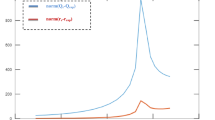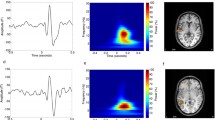Abstract
We have developed a parameter, which describes how well the measurement is concentrated on the region of interest source area compared to other source areas in the volume conductor. The parameter concept is called the region of interest sensitivity ratio (ROISR). We assume that ROISR is also connected to the SNR of the measurement. The objective of the present study was to investigate the assumed correlation between the ROISR and SNR of the measurement with three-layer spherical head model. We studied how the source distribution and orientation affect the correlation and thus how applicable the ROISR is in analysing the sensitivity distributions of measurements. We simulated bipolar EEG-evoked potential measurements with 16 combinations of four-source distribution and four-source orientation models. The results indicate that the ROISR correlates with the SNR of the measurement with all tested source distributions and orientations. Thus the ROISRs concept can be applied to analyse measurement setups by modelling and analysing the sensitivity distributions.





Similar content being viewed by others
References
de Munck JC, Vijn PC, Lopes da Silva FH (1992) A random dipole model for spontaneous brain activity. IEEE Trans Biomed Eng 39(8):791–804
Freeman WJ (2004) Origin, structure, and role of background EEG activity. Part 1. Analytic amplitude. Clin Neurophysiol 115(9):2077–2088
Lutkenhoner B (1998) Dipole source localization by means of maximum likelihood estimation. I. Theory and simulations. Electroencephalogr Clin Neurophysiol 106(4):314–321
Lutkenhoner B (1998) Dipole source localization by means of maximum likelihood estimation. II. Experimental evaluation. Electroencephalogr Clin Neurophysiol 106(4):322–329
McFee R, Johnston FD (1953) Electrocardiographic leads. I. Introduction. Circulation 8(4):554–568
Muller T, Ball T, Kristeva-Feige R et al (2000) Selecting relevant electrode positions for classification tasks based on the electro-encephalogram. Med Biol Eng Comput 38(1):62–67
Niedermeyer E, Lopes da Silva F (1993) Electroencephalography: basic principles, clinical applications, and related fields. Williams and Wilkins, Baltimore
Nunez PL (2000) Toward a quantitative description of large-scale neocortical dynamic function and EEG. Behav Brain Sci 23(3):371–398; discussion 399–437
Oostendorp TF, Delbeke J, Stegeman DF (2000) The conductivity of the human skull: results of in vivo and in vitro measurements. IEEE Trans Biomed Eng 47(11):1487–1492
Raz J, Turetsky B, Fein G (1988) Confidence intervals for the signal-to-noise ratio when a signal embedded in noise is observed over repeated trials. IEEE Trans Biomed Eng 35(8):646–649
Rush S, Driscoll DA (1969) EEG electrode sensitivity–an application of reciprocity. IEEE Trans Biomed Eng 16(1):15–22
Väisänen J, Väisänen O, Malmivuo J et al (2007) New method for analysing sensitivity distributions of electroencephalography measurements. Med Biol Eng Comput 46(2):101–108
Weisstein E Correlation coefficient. Wolfram web resource. http://mathworld.wolfram.com/
Yom-Tov E, Inbar GF (2003) Detection of movement-related potentials from the electro-encephalogram for possible use in a brain-computer interface. Med Biol Eng Comput 41(1):85–93
Acknowledgments
We would like to thank Robert MacGilleon for English proof-reading. The work has been supported by grants from the Finnish Cultural Foundation, the Pirkanmaa Region, the Emil Aaltonen Foundation, the Foundation of Technology Finland and the Ragnar Granit Foundation.
Author information
Authors and Affiliations
Corresponding author
Rights and permissions
About this article
Cite this article
Väisänen, J., Malmivuo, J. & Hyttinen, J. Correlation between signal-to-noise ratios and region of interest sensitivity ratios of bipolar EEG measurements. Med Biol Eng Comput 46, 381–389 (2008). https://doi.org/10.1007/s11517-008-0321-3
Received:
Accepted:
Published:
Issue Date:
DOI: https://doi.org/10.1007/s11517-008-0321-3




